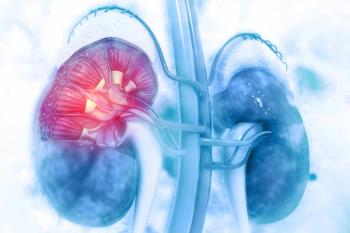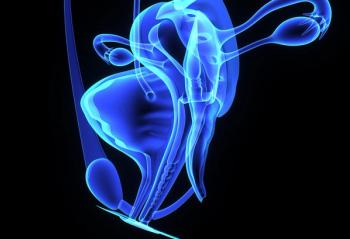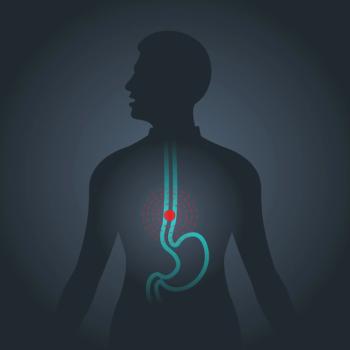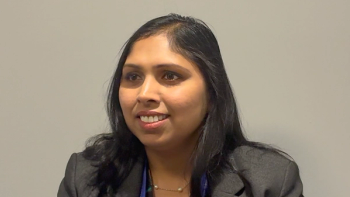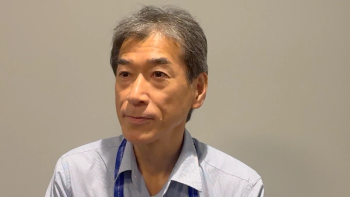
Determining Who Should Get Quadruplet Vs Triplet Therapy in Multiple Myeloma
At an Around the Practice, experts from Emory University gathered to discuss treatment options for patients with multiple myeloma who are transplant-eligible or ineligible.
Experts from Emory University School of Medicine who specialize in multiple myeloma gathered to discuss the current treatment landscape, including which patients are best suited to a quadruplet or triplet regimen. The panel also reviewed a patient case of a 65-year-old woman with newly diagnosed multiple myeloma, and how they would go about treating her based on characteristics, laboratory results, and imaging.
The panel was led by Sagar Lonial, MD, FACP, chief medical officer at Winship Cancer Institute, professor and chair in the Department of Hematology and Medical Oncology, and Anne and Bernard Gray Family Chair in Cancer at Emory University.
Other panelists included Ajay K. Nooka, MD, MPH, FACP, professor in the Department of Hematology and Medical Oncology, Director of the Myeloma Program at Emory University, and Scientific Director of Winship Data and Technology Applications Shared Resource at Winship Cancer Institute of Emory University; Jonathan L. Kaufman, MD, David Bankes Glass multiple myeloma professorship, and professor at Emory University, and medical director and section chief of Ambulatory Infusion Centers at Winship Cancer Institute; and Nisha Joseph, MD, assistant professor at Emory University and co-director of the Winship Summer Scholars Program at Winship Cancer Institute.
The panel specifically discussed how a quadruplet regimen consisting of daratumumab (Darzalex), lenalidomide (Revlimid), bortezomib (Velcade), and dexamethasone (Dara-RVd) for this patient case has become the standard of care. However, the experts debated the appropriate use of a triplet vs quadruplet therapy, and how they would approach selecting patients for each resoective regimen.
Review of Quadruplet Therapies
Kaufman: This is a typical case. The patient has clearly symptomatic myeloma with anemia and lytic bone disease, standard-risk disease, and our approach has been—for patients who are standard-risk—to give the quadruplet of Dara-RVd and offer early autologous transplant followed by lenalidomide maintenance.
Nooka: This has been our practice for the last 5 years, and using the quadruplet agents, we’re able to get those depths of responses that we have not been seeing with the [triplet] treatments. However, in the post-transplant setting, we’ve resorted to going onto single-agent maintenance, which differs slightly from the existing literature.
Lonial: How do you determine between using triplet or quadruplet therapy?
Joseph: Historically, the standard of care for induction has been triplets, namely RVd, which we have looked at in our own dataset [at Emory], which shows impressive response rates and advocacy. Moving forward, there’s this question of triplets vs quadruplets, and can we add an additional drug to the RVd backbone to try to enhance that response and therefore prolong that progression-free survival [PFS] benefit, which is the goal?
Lonial: Let’s review the phase 2 GRIFFIN trial (NCT02874742) results, which launched a new era of induction therapy.1
Kaufman: The GRIFFIN study was a phase-2 randomized study comparing RVd, early autologous transplant, and consolidation with RVd, and then single-agent lenalidomide maintenance with all those components [plus] daratumumab. The primary end point of the study was stringent complete response [CR] rate after consolidation. Basically, the equivalent of our day 100. The study showed that by adding daratumumab early, we’re able to increase the stringent CR rate from 32% to 42%.
What’s so important about our data is that 32% post-transplant, day 100 stringent CR rate was the same exact response rate that we saw in our data. That gave us a lot of confidence that adding daratumumab would add efficacy because the overall response rates were so high. What we’ve seen with the updates of the data as the data have matured is that now that we see a clear PFS advantage, we haven’t seen any overall survival advantage. It’s a relatively small study. It’s unclear whether we’ll ever see an overall survival advantage. We’ve seen the clear response advantage that translated into a clear PFS advantage.
Nooka: The GRIFFIN study had a second arm of maintenance post-consolidation that received daratumumab and lenalidomide. If you look at the data from lenalidomide as a single agent and as a maintenance agent, the bar is set too high. What we don’t know at this point is what the addition of daratumumab, in the long run, would add to what we already have from a PFS perspective from lenalidomide, but rather, could we use daratumumab at the time of an early relapse? That would be a great segue for us to move at the time of relapse from lenalidomide maintenance to a 3-drug regimen, or [maybe] a quadruplet regimen down the line at that point with daratumumab as a backbone.
Lonial: We've talked a lot about Dara-RVd, and I think the GRIFFIN study certainly was one study to get us going there. What other studies [add] either CD38 or a different proteasome inhibitor into the mix?
Nooka: There are 2 studies in this space that have clearly shown the benefit and are risk-stratified. As a general rule, we use Dara-RVd as a quadruplet in most patients. There is a small group of patients who fall under this category of high-risk disease who don’t get the same benefit as patients who are standard-risk. The question here is should we do something differently for them, or should we add more [treatment options]?
In that context, the phase 2 MASTERS trial (NCT03224507) was done in 123 patients using daratumumab, carfilzomib (Kyprolis), lenalidomide, and dexamethasone (DaraKRd).2 I may not agree with the design of the trial, but what could be inferred from the trial is 80% of the patients post-induction achieved a minimal residual disease [MRD] negativity at 10-5. These are good results. Can we extrapolate these results to our clinical practice and use them to guide our therapy for those patients who may not get the same kind of benefit as everybody else?
To add this, the phase 2 GMMG-Concept trial (NCT03104842) has looked at the high-risk patients using only deletion 17p translocation 4;14 and 14;16.3 What they did was use this CD38 monoclonal antibody isatuximab (Sarclisa) in combination with the same backbone of KRd. With this regimen, the end point was MRD negativity at consolidation. The trial design is unique in the sense that everybody got 6 cycles of isatuximab plus KRd, and transplant-eligible patients would get a transplant followed by 4 cycles of Isa-KRd consolidation. The patients who were transplant ineligible will get Isa-KRd for 2 additional cycles in place of a transplant.
At the end of the consolidation, they were asking for an MRD negativity rate beyond 50%, which was what they considered to be a successful induction regimen. The MRD negativity rate at 10-5 should be beyond that 60% rate, and here they were able to show that you can achieve this combination in transplant-eligible patients and in ineligible patients in close to 70% of the patients. Good results support what we do, using a data combination with KRd. We’re only talking about the induction that we could achieve that MRD negativity rate.
Determining Therapy Options Based on Patient Characteristics
Lonial: If you’re trying to make some recommendations for people out in the community in terms of what to do, do we use high risk or standard risk to drive therapy?
Nooka: I would always talk about the framework. In the framework if you take 3 boxes of treatment, box number 1 is the induction, box number 2 is a transplant, and box number 3 is the maintenance. Those boxes can change based on the risk stratification. Once you identify the patient—who that person is, and the standard risk courses vs the high risk—the goal should be achieving the deepest response possible.
Daratumumab can be used for patients who are standard-risk, and dara-KRd for those who are high risk. You're achieving a goal at the end of induction. If the patient is transplant eligible, absolutely, you fill in that box of transplant. When you come to the third box, that is where, if it’s a standard-risk patient—even though we have data coming from the phase 3 ATLAS study [NCT02659293], and the phase 2 FORTE trial [NCT02203643]—that [is when] 2 drugs are better than one. But in reality, we don’t need those drugs because it means extra cost, extra resources, and extra [adverse] effects for the patients. We can make a case if the patient needs it, and that’s the case I would make for a high-risk patient who would need more than 1 drug.
Kaufman: Conceptually, we know, the better therapies we must benefit the patients who are standard-risk the most. Dara-RVd [is used] for standard risk, and for high risk, the concept is we should use whatever regimen we think is best. There’s a lot of debate about what high risk is, but I think the principle of high risk, as you said, is using your best induction regimen. These are patients for whom there should be very little debate that autologous transplant is superior to not [undergoing] autologous transplant.
Thirdly, we should move away from the debate that 2-drug or 3-drug maintenance therapy is better than 1-drug maintenance therapy for patients who are high-risk. That’s our approach, and we have more than a decade of treating patients with doublet and triplet in a high-risk setting. Originally, we [used] RVd, then we moved to KRd. The key element is to not undertreat high-risk patients because if you undertreat high-risk patients, they’ll certainly relapse early, and that’s associated with a bad overall outcome.
Lonial: How does elotuzumab [Empliciti] fit in the current treatment landscape?
Joseph: [We have discussed] quadruplets and [have] looked at monoclonal antibodies, but in contrast, instead of looking at daratumumab and isatuximab, which are anti-CD38 antibodies, elotuzumab targets a different antigen, SLAMF7, which has natural killer-cell activating properties. This phase 3 trial [NCT03948035] is looking at elotuzumab in combination with KRd in patients who are newly diagnosed transplant-eligible.4 The trial is designed with 6 cycles, and patients are randomly assigned to either elotuzumab plus KRd vs KRd, followed by transplant with an option for a tandem transplant for patients who don’t achieve at least a CR to the initial maneuver or have high-risk disease followed by additional consolidation; maintenance [consists of] either elotuzumab plus lenalidomide or lenalidomide to progression.
The primary end point of the study was looking at MRD negativity and patients who had at least achieved a VGPR. What has been presented is that MRD rates, initially, are about 50% in the quadruplet arm vs approximately 35% in the triplet arm. This shows that quadruplets can be better in terms of depth of response. We can achieve deeper control of the disease and potentially longer PFS. When you compare that with the MRD negativity rates that we’re seeing with daratumumab and KRd in the MASTER trial, [it] was over 80% and 60% in the GMMG-Concept trial. [This] probably [doesn’t] line up or match up with what we’re seeing with anti-CD38, but overall, [this] makes the case for a quadruplet over a triplet in newly-diagnosed myeloma.
Lonial: What characteristics do you look for in a patient who may be eligible for transplant?
Kaufman: There are 3 things that we look at in consideration of transplant eligibility and include age, performance status, and comorbidities. The reality is that of those 3, age is the least important. My approach is that most patients who are able to walk into my clinic who are 75 years and younger are potentially transplant candidates. Most patients who are over 75 are probably never going to be transplant candidates. There’s a handful of patients over 75 years who are clear transplant candidates.
We think about performance status. When I first meet a patient and they have newly diagnosed myeloma, if they’re very sick from myeloma, that’s not the performance status I'm thinking about. I’m thinking about what they were 6 months before diagnosis. Are they active? We anticipate with our other induction therapies that a patient who’s sick with myeloma is going to get better and get back in this setting of induction therapy to that performance status. The third is comorbidities. For the most part, patients even on dialysis can have autologous transplants, but the comorbidities that prevent people from moving forward with transplants are severe lung disease, heart disease, or liver disease.
Lonial: How do you approach collaboration and multidisciplinary care?
Joseph: I’m certainly very fortunate, I’m much younger than everyone up here and can benefit from your clinical experience if we practice as a group. We tend to practice the same. I can answer some of these questions that you’re asking because we tend to approach myeloma the same way and then we meet weekly and even sometimes more than once a week to talk through these difficult cases, which I think is helpful. Although a patient may see one of us, they will likely be receiving the exact same therapy if they saw a different one of us in the group, which I think is helpful.
Kaufman: The other thing that we do is about every 6 months, we take a look at what the world data says, and we ask the question, should we make a modification? For years, we were using RVd as our triplet post-transplant maintenance. A large part was based on the FORTE trial, and we switched to KRd. There’s a variety of reasons, but that’s at least one of the reasons that in a data-supported way, switches a practice. The reality is that we debate all the time about what’s optimal. One of the benefits of being in a group is once we’ve decided on our overall strategy, we’re all able to implement it.
Nooka: That’s the beauty about this homogenous practice; even though we debate, we come to a conclusion, we come to an agreement. Most times, we agree. Then we practice similarly, which allows for a homogeneous practice, and when we have these hundreds of patients treated the same way, what are the optimal outcomes that we see? We compare with the standard of care. If we’re doing anything lesser, which never happened, but if we’re doing anything lesser, we are ready to change. If we’re doing better than the perceived optimal induction at the time, we want to continue and provide the data to prove that this is the most optimal treatment that will help us to design futuristic clinical trials.
References
- Sborov DW, Laubach J, Kaufman JL, et al. Daratumumab (dara) + lenalidomide, bortezomib, and dexamethasone (RVd) in patients with transplant-eligible newly diagnosed multiple myeloma (NDMM): final analysis of GRIFFIN. Presented at: 19th International Myeloma Society Annual Meeting; August 25-27, 2022; Los Angeles, CA. Abstract OAB-057
- Costa LJ, Chhabra S, Medvedova E, et al. Daratumumab, carfilzomib, lenalidomide, and dexamethasone with minimal residual disease response-adapted therapy in newly diagnosed multiple myeloma. J Clin Oncol. 2022;40(suppl 25):2901-2912. doi:10.1200/JCO.21.01935
- Weisel K, Besemer B, Haenel M, et al. Isatuximab, carfilzomib, lenalidomide, and dexamethasone (Isa-KRd) in patients with high-risk newly diagnosed multiple myeloma: planned interim analysis of the GMMG-Concept trial. Blood. 2022;140(suppl 1):1836-1838. doi:10.1182/blood-2022-156309
- Knop S, Stuebig T, Kull M, et al. Carfilzomib, lenalidomide, and dexamethasone (KRd) versus elotuzumab and KRd in transplant-eligible patients with newly diagnosed multiple myeloma: Post-induction response and MRD results from an open-label randomized phase 3 study. J Clin Oncol. 2023;41(suppl 16):8000. doi:10.1200/JCO.2023.41.16_suppl.8000
Newsletter
Stay up to date on recent advances in the multidisciplinary approach to cancer.


